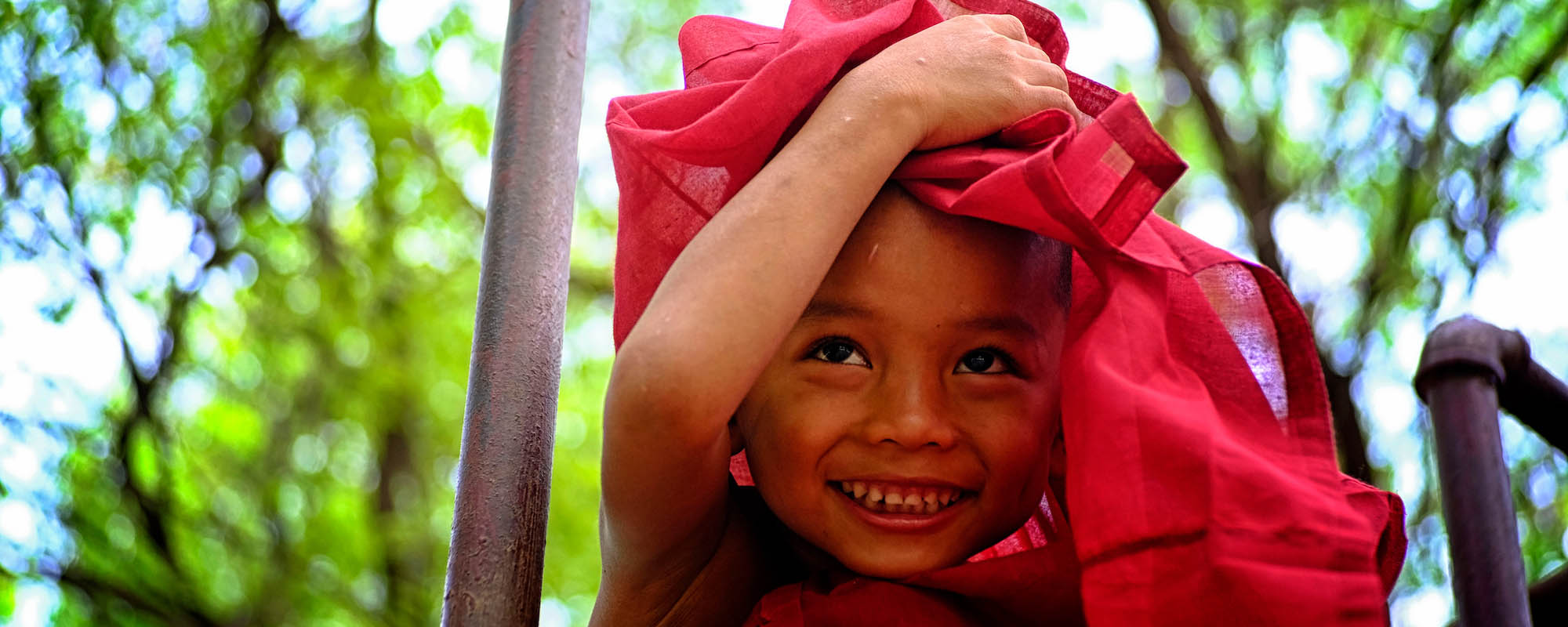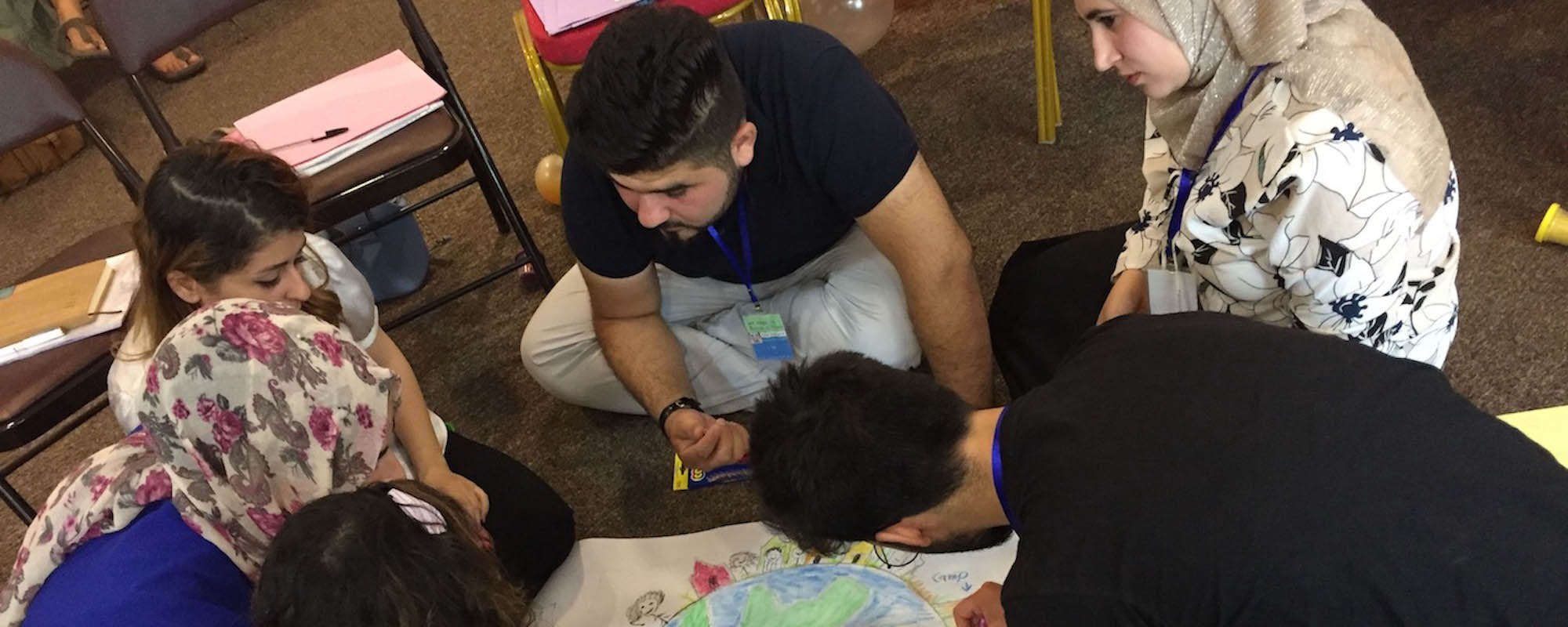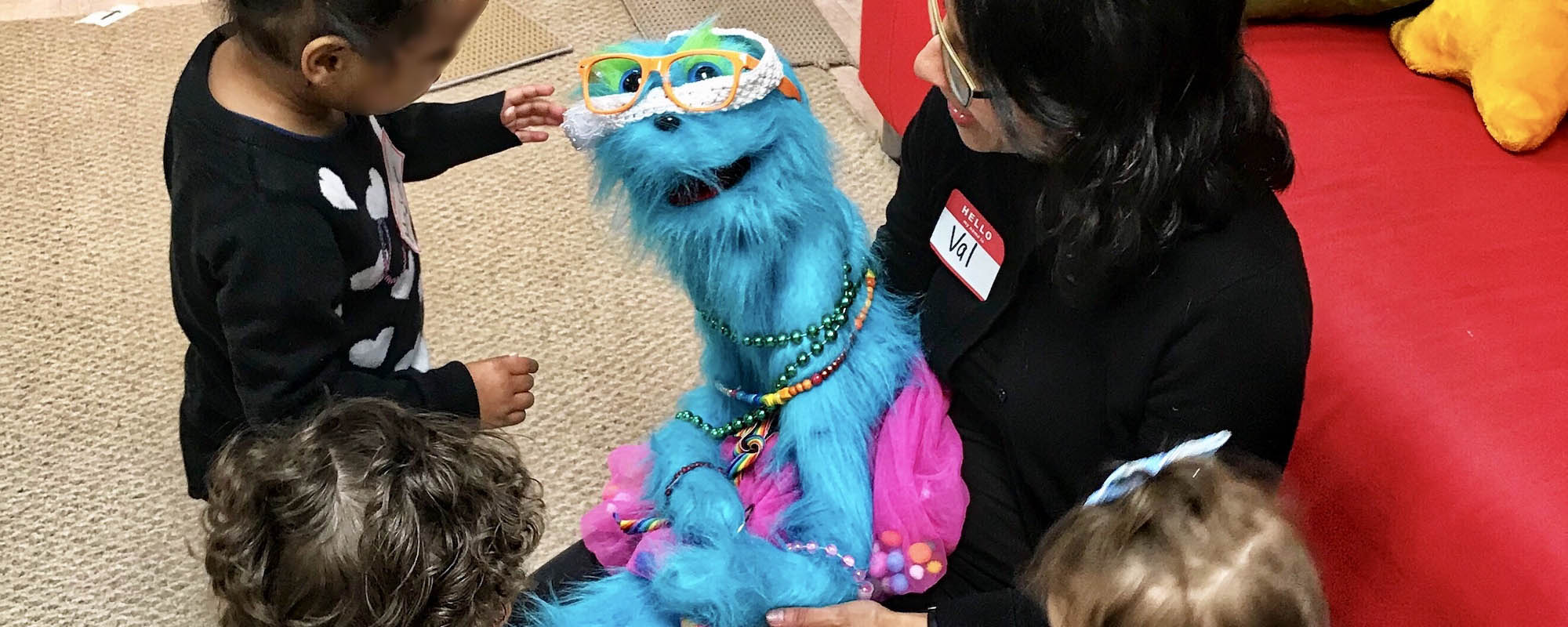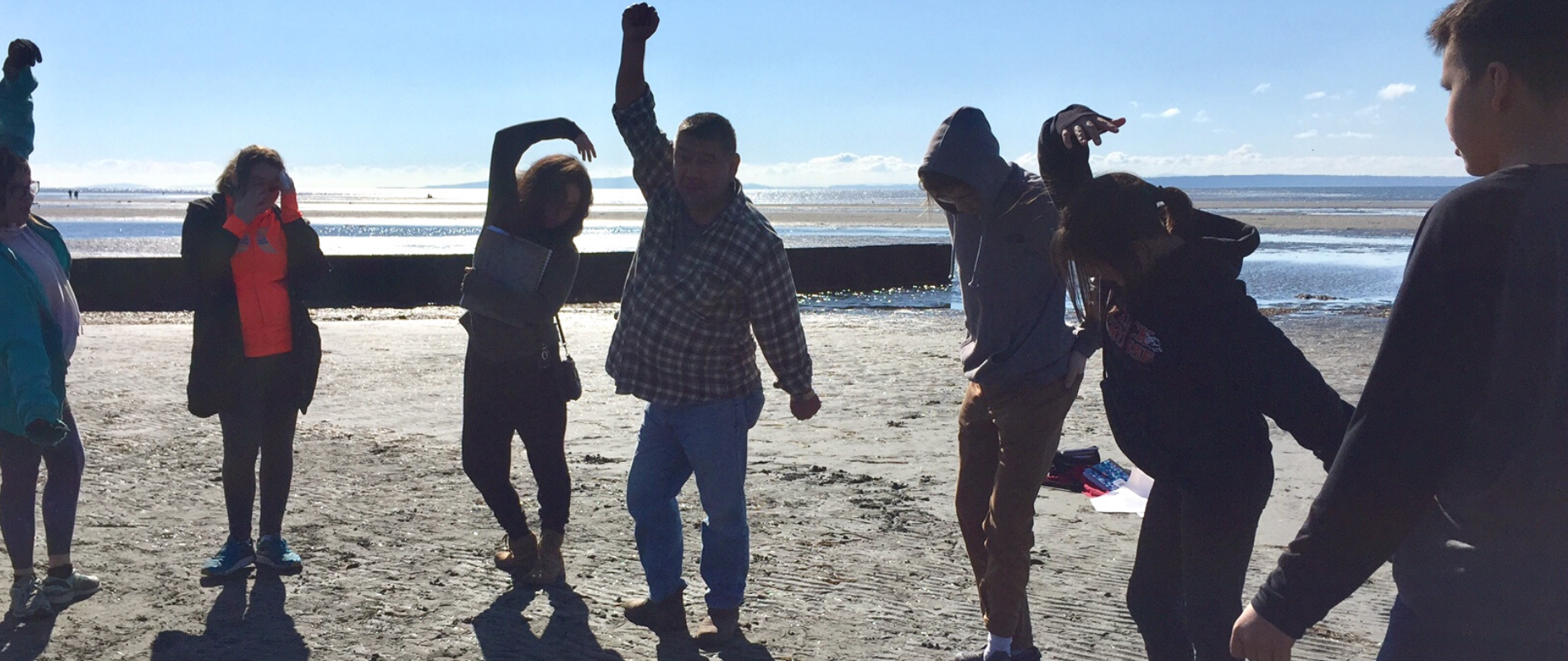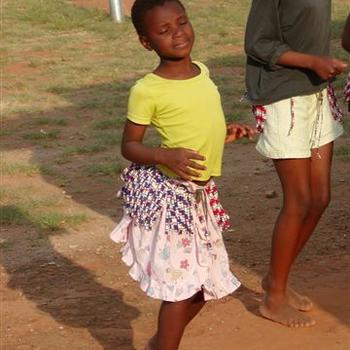
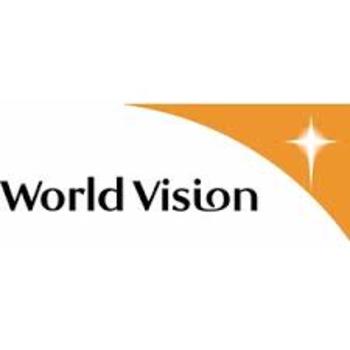

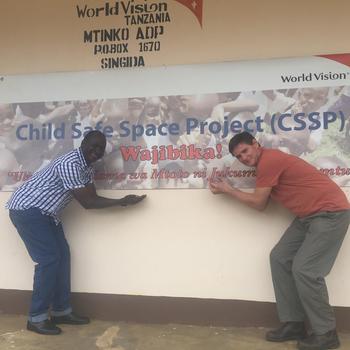


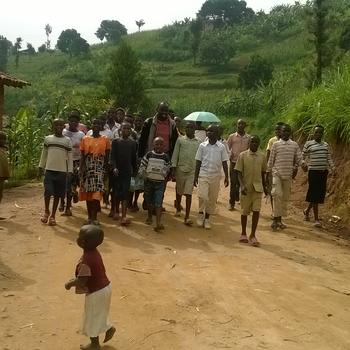
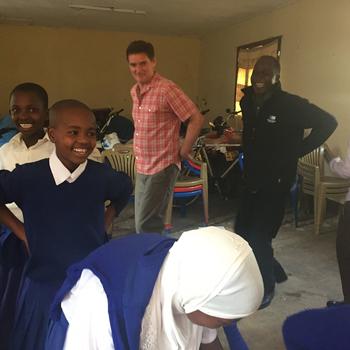

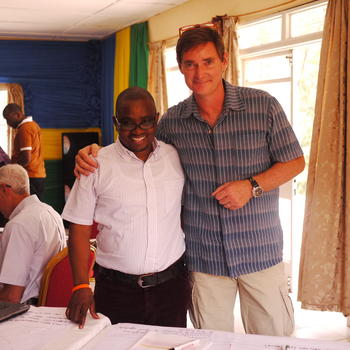
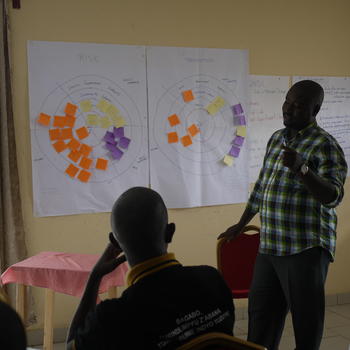
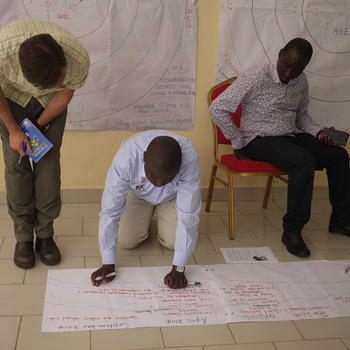
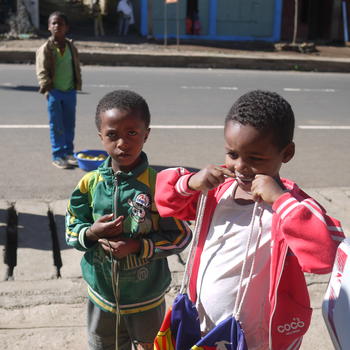
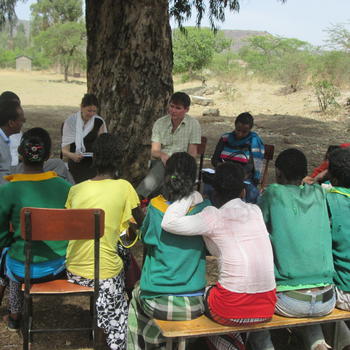
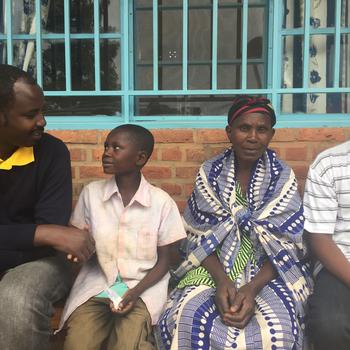
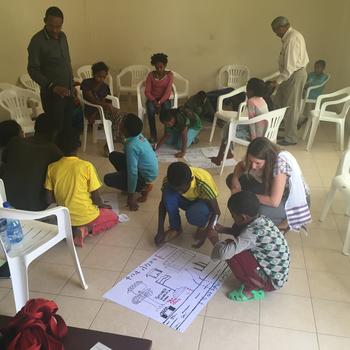
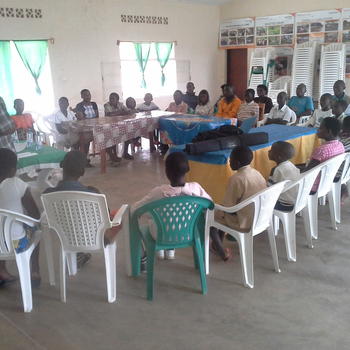
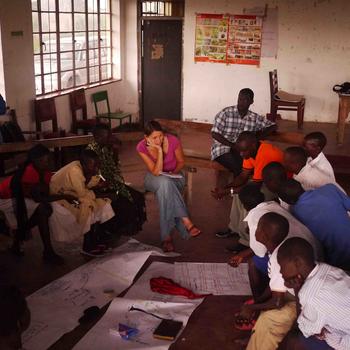
A child protection Theory of Change research study to strengthen formal and non formal protection systems in Rwanda, Uganda,Tanzania, and Ethiopia
2013-2014 saw the first phase of research in implementing a World Vision (WV) regional East African child protection Theory of Change (ToC).
The first visit was to Medebay Zana, one of World Vision 72 Area Development Program (ADP) sites in Ethiopia to meet the team and learn about their good work on Child Protection as a precursor to the Baseline TOC training, along with Uganda in early May 2014. - See more here.
The World Vision East Africa Child Protection team is led by Richard Wamimbi, a doctoral student in our CPID program at Royal Roads University.
The fall of 2014 saw Philip and Michele Cook in East Africa to support the Child Protection Theory of Change Training and Research process. We started with a training and field visit to Ubumwe ADP in Rwanda, followed by a visit to Nabakalu ADP in Uganda, Lake Eyasi ADP in Tanzania, and Medeby Zana ADP in Ethiopia. Mike Wessels and the East Africa research team were able to join us in Rwanda and we were able to meet with most of the National offices to share initial findings and recommendations. - See more here.
In the Spring of 2015, Philip and Michele Cook continued their work to further a child protection theory of change with World Vision East Africa and IICRD Associate Mike Wessels in Rwanda, Ethiopia, and Tanzania. Phase 2 of the TOC work and support to the ADP's in setting up their final evaluation of the Child Safe Spaces Project - See more here
The research specifically focuses on World Vision’s Child Protection and Advocacy (CPA) Project Model and related Design, Monitoring and Evaluation (DME) interventions. The research also addresses a growing global realization within the child protection sector, that stand-‐alone government protection efforts often have limited success.
In comparison, “Bottom up” initiatives in which communities, including children, are actively and meaningfully involved in reducing protection risk factors while strengthening local protective mechanisms are more beneficial to children’s long term positive outcomes. Specifically, the ToC seeks to assess World Vision’s CPA impact in strengthening child protection systems, in particular elements of formal (government) and non-‐formal (kinship, child to child – peer relationships, community children’s “natural advocates”, faith communities, supportive cultural practices) systems. This occurs in relation to the specific CPA interventions including:
- Mobilize and raise awareness (such as Community Change, Channels of Hope)
- Strengthen reporting and referral mechanisms
- Support vulnerable households (such as Home Visitors, Celebrating Families/ Positive Discipline)
- Strengthen children’s life skills and resilience (such as Peace Road)
- Address other root causes to protection issues (from CP Analysis*)
- Local level advocacy
Specifically, the ToC seeks to assess World Vision’s CPA impact in strengthening child protection systems, in particular elements of formal (government) and non-‐formal (kinship, child to child – peer relationships, community children’s “natural advocates”, faith communities, supportive cultural practices) systems.
Through our Child Protection in Development Community of Practice (cpid.iicrd.org), the World Vision East Africa Theory of Change group (made up of 30 Child Protection Officers from the World Vision East Africa office) has actively engaged in 25 learning calls/webinars and ongoing group discussions on the online learning platform over one year (October 2014-October 2015). Read field blogs here and here.

